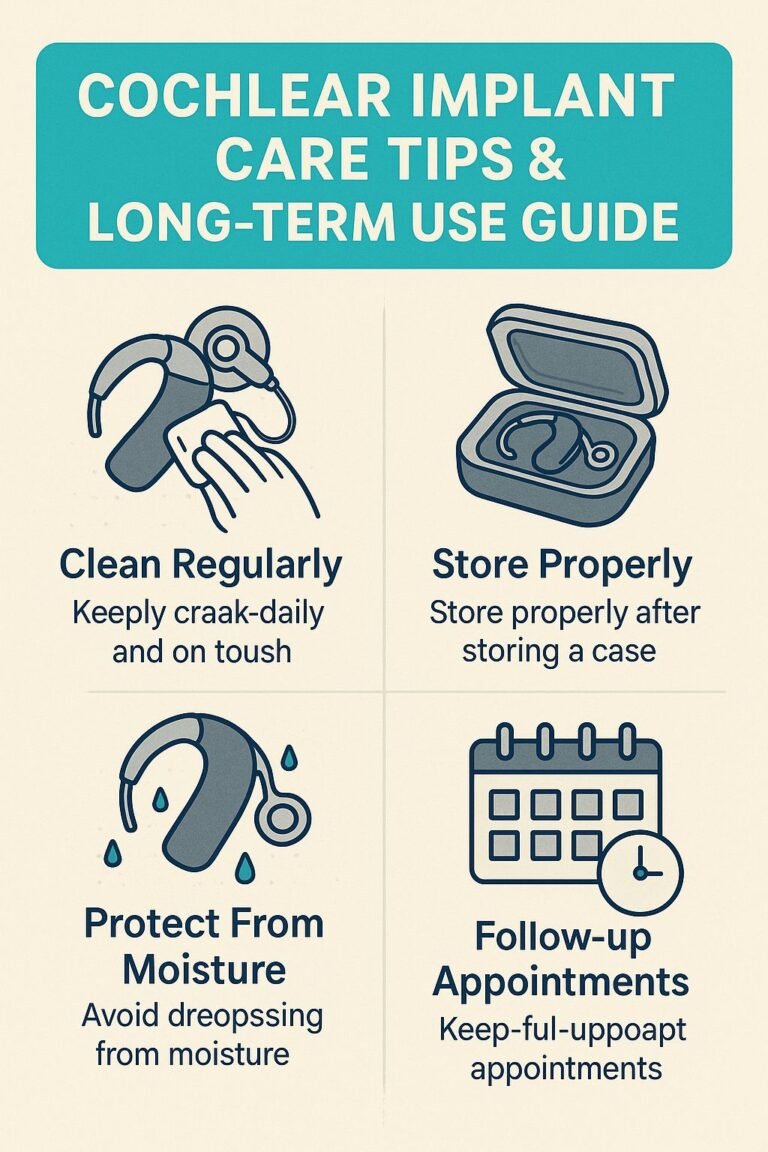Important Points
- Somatic healing is a method that concentrates on the relationship between the mind and body to help discharge trauma that is physically stored.
- It encourages emotional release, anxiety reduction, and mental health improvement through various techniques such as breathwork and body awareness.
- Somatic healing can enhance physical awareness and presence, allowing individuals to become more in tune with their bodily signals.
- This method aids in the development of resilience and effective stress and trauma coping mechanisms.
- Techniques such as mindful movement and gentle touch are essential to somatic healing, providing a holistic approach to wellness.
Understanding Somatic Healing
Have you ever had the feeling that your body retains stress and tension long after a difficult experience has ended? Somatic healing may be the solution you’ve been seeking. This unique method takes advantage of the mind-body connection, allowing you to release stored emotions and trauma. It’s a gentle yet potent way to treat both physical and emotional pain.
Somatic healing is a process that recognizes the intricate link between our physical feelings and our emotional state. It’s a method that utilizes the body’s own knowledge to find routes to recovery that might be missed by more conventional methods. Not only can it aid in the healing of past traumas, but it can also improve general health.
Understanding the Mind-Body Link
The mind-body link is a key aspect of somatic healing. It proposes that our feelings, thoughts, and physical sensations are all linked, and they impact each other constantly. For example, if you’re feeling stressed, you might notice that your heart is beating faster or your muscles are getting tense. This is your body’s way of reacting to your emotional state.
By understanding this connection, we can address emotional distress by working with the body. By tuning into physical sensations, we can start to untangle the emotional knots that may have formed over time. This approach is particularly effective because it doesn’t just treat symptoms—it targets the root causes of distress.
How Trauma and Emotional Distress Affect the Body
Trauma doesn’t only impact our minds; it also leaves a mark on our bodies. Emotional distress can show up physically in a variety of ways, including chronic pain and digestive problems. This happens because traumatic experiences can become “trapped” in the body, leading to tension and discomfort.
Somatic healing acknowledges the physical symptoms of trauma and aims to alleviate them. Practices such as controlled breathing, conscious movement, and soft touch can assist you in understanding and releasing these pent-up emotions. This can help you unburden yourself from the physical and emotional weight of past experiences.
Why You Should Listen to Your Body
One of the main principles of somatic healing is understanding how to listen to your body. Our bodies often try to communicate with us through sensations, but we may overlook these signals in our busy lives. By being aware of these cues, we can learn a lot about our emotional and physical states.
Let’s say you feel a tightness in your shoulders. This could be your body’s way of telling you that you’re stressed or feeling too much pressure. By recognizing this tension, you can identify the root emotion and work to let it go. This method of paying attention to physical sensations is a key element of somatic healing, which gives you the power to control your own health.
Why Somatic Healing is Beneficial
There are many reasons why somatic healing is beneficial to your emotional and physical health. Here are some of the main benefits of this healing technique.
Letting Go and Healing Emotionally
Perhaps the greatest advantage of somatic healing is how it can help you let go and heal emotionally. By focusing on the sensations in your body, you can tap into and deal with emotions that you might have been pushing down or ignoring. This can result in deep healing and a feeling of relief.
Imagine this: you’re in the middle of a somatic session, and suddenly, you feel a rush of emotion as your body lets go of pent-up tension. This discharge can be an incredibly cleansing experience, helping you to move on with less emotional baggage. It’s a potent reminder that healing isn’t just about the mind—it involves the body too.
Conscious Movement and Yoga Practices
Conscious movement is a fundamental aspect of somatic healing. It requires you to be fully engaged while moving your body, whether it’s through yoga, tai chi, or basic stretching exercises. This practice prompts you to concentrate on the feelings in your body, fostering a deeper connection with yourself.
Yoga is a fantastic method for somatic healing. It incorporates physical poses, breath control, and meditation for a well-rounded experience. As you move from pose to pose, you learn to understand your body’s signals, recognizing where tension is and how to let it go.
In addition, being aware of how you move can help to lower stress and anxiety levels. When you shift your attention from your thoughts to your physical movements, you can calm your mind and find inner tranquility. This makes it a powerful tool for dealing with the stress of daily life and enhancing your overall health.
Soft Touch and Massage Techniques
Soft touch and massage are another successful approach in somatic healing. These techniques can help to release stress and encourage relaxation, making them perfect for those who are dealing with stress or trauma.
Take massage therapy as an example. It manipulates the body’s soft tissues, which can help to reduce pain and increase circulation. The comforting touch can also stimulate the release of endorphins, the body’s natural pain relievers, which can provide a feeling of comfort and well-being.
Who is Somatic Healing For?
Somatic healing can be used by a wide variety of people. It doesn’t matter if you’re dealing with chronic pain, trauma, or just want to improve your overall health, somatic healing provides useful tools for change. For those experiencing discomfort, exploring yoga asanas to relieve pain might also be beneficial.
Health Issues Treated by Somatic Healing
Somatic healing is especially beneficial for health issues that affect both the body and the mind. This includes chronic pain, anxiety disorders, PTSD, and depression. By focusing on the mind-body connection, somatic healing can help reduce symptoms and aid in recovery.
Significance for Those Who Have Experienced Trauma
Those who have experienced trauma can find great solace in somatic healing. This method recognizes that trauma is kept in the body, not just the mind. By paying attention to body sensations, people can deal with and let go of the physical signs of trauma.
Let’s say someone who has experienced trauma constantly feels tension in their shoulders. By using somatic methods like scanning their body and controlling their breath, they can find and let go of this tension. This can result in healing both physically and emotionally.
Daily Tensions and Overall Health
Even if you aren’t battling a particular ailment, somatic healing can improve your overall health. By becoming more in tune with your body’s signals, you can handle stress more effectively and keep a sense of equilibrium in your life. For those interested in deeper relaxation techniques, exploring wellness retreats in Hawaii might offer additional benefits.
Adding somatic exercises to your everyday activities can assist you in feeling more secure and aware. This not only enhances your mental well-being but also boosts your physical health, establishing a healthy mind-body relationship.
Simple Steps to Include Somatic Healing in Your Everyday Routine
Integrating somatic healing into your everyday routine is not as complex as it may seem. A few straightforward exercises, such as yoga asanas, can get you started on enjoying the advantages of this comprehensive method.
Start by dedicating a few minutes of your day to mindful movement or breathwork. Even a brief practice can have a huge impact on your feelings. As you get more comfortable, you can slowly increase the duration and complexity of your practice.
Keep in mind that the secret to somatic healing is consistency. The more you do these practices on a regular basis, the more benefits you will experience. Here are some steps to help you get started, including exploring wellness retreats for a deeper experience.
- Set a regular time each day for your somatic practice.
- Create a peaceful environment where you can focus without distractions.
- Start with simple exercises and gradually explore more advanced techniques.
- Listen to your body and adjust your practice as needed.
- Be patient and kind to yourself as you embark on this journey.
Simple Exercises for Beginners
If you’re new to somatic healing, start with basic exercises that focus on breath and body awareness. These can help you become more attuned to your body’s signals and lay the foundation for more advanced practices.
Body scanning is a straightforward exercise. Get comfortable and lie down. Then, gradually focus on each section of your body, beginning with your toes and ending with your head. Pay attention to any feelings, tightness, or areas where you’re relaxed. This exercise will help you become more in tune with your body and what it needs. For a deeper understanding, you can explore somatic therapy for trauma.
Deep breathing is another exercise that’s easy for beginners. Find a comfortable place to sit and start to take slow, deep breaths. Pay attention to your chest as it rises and falls. This can help your mind to calm down. It can also help your body to let go of any tension it’s holding onto. This can help you to relax and feel better overall. For more information, you can explore somatic therapy for trauma healing.
Making Your Environment Safe and Cozy
It’s crucial to make a safe and cozy space for somatic healing. This way, you can concentrate on your practice without any distractions or discomfort.
Select a tranquil spot that brings you peace. You may prefer to lower the lights or play gentle music to create a soothing atmosphere. Make sure you have a cozy mat or pillow to sit or lie down on, and have a blanket on hand in case you feel chilly.
Be Consistent and Patient
Somatic healing requires consistency. The more you do it, the more you’ll feel the benefits. Find a routine that works for you, whether it’s every day, a few times a week, or just on the weekends.
As you embark on your somatic healing journey, remember to be kind to yourself. This is a journey, not a race, and progress may be slow. Believe in the process and allow yourself the necessary time and space to fully experience the transformative power of this practice.
Conclusion on Somatic Healing
Somatic healing is a strong method for achieving emotional and physical health. By tuning in to your body’s wisdom, you can let go of stored trauma, lessen stress, and boost your overall health. Whether you’re a survivor of trauma or just looking to better your health, somatic healing gives you important tools for change. Learn more about how longevity retreats are transforming health and wellness practices around the world.
Words of Support as You Begin
The journey to somatic healing can feel thrilling and a bit scary at the same time. Don’t forget, you’re not alone—countless others have taken this journey before you and have found deep healing and personal growth. Have faith in the wisdom of your body and be open to the potential that somatic healing brings.
Go ahead and take the first step, and remember that each practice brings you closer to a life that is more balanced and harmonious. Enjoy the journey and celebrate each moment of progress along the way. For those interested in enhancing their wellness routine, consider incorporating yoga asanas to boost your well-being.
A Long-Term Solution for Emotional and Physical Health
Somatic healing is a long-term solution for achieving emotional and physical health. This practice focuses on the connection between the mind and body, allowing people to let go of stored trauma and stress and live a more balanced and harmonious life. Regardless of whether you are dealing with past trauma or just want to improve your well-being, somatic healing gives you the tools and techniques that can be incorporated into your daily life for a lasting change.
By engaging in activities such as conscious motion, breath control exercises, and bodily perception routines, somatic healing enables you to interpret your body’s signals and confront both physical and emotional discomfort. This all-encompassing method not only reduces symptoms but also addresses the underlying issues, promoting genuine healing and change.
Commonly Asked Questions
- What does somatic healing mean?
- What is the process of somatic healing?
- What are the fundamental principles of somatic healing?
- Is it possible to practice somatic healing at home?
- How much time does it take to see the effects of somatic healing?
- What is the difference between somatic healing and rest?
- Are there any potential risks with somatic healing?
- Can somatic healing be combined with other forms of therapy?
- What qualifications should a somatic healer possess?
- Where can I find more information on somatic healing?
Somatic healing is a type of therapy that focuses on the mind-body connection. It helps people let go of trauma and stress that is held in the body. It uses techniques like breathwork, mindful movement, and body awareness exercises to support healing and wellness.
Somatic healing works by interacting with the body’s feelings to reach and process emotions that may be physically stored. This allows people to let go of tension and trauma, leading to emotional and physical healing.
Somatic healing is based on the concepts of body consciousness, emotional liberation, and the mind-body connection. These concepts steer the different methods used in somatic therapy, aiding people in attaining comprehensive healing.
Understanding somatic healing
Somatic healing is a type of therapy that emphasizes the mind-body connection as a pathway to healing. It uses techniques that increase a person’s awareness of bodily sensations, which can help them release stored emotions and trauma. Somatic healing addresses both the physical and emotional components of well-being and recovery.
What is the process of somatic healing?
The process of somatic healing involves using the body’s sensations as a means of identifying and processing emotions. This is done through techniques such as breathwork, body awareness exercises, and mindful movement. These techniques allow individuals to become more in tune with their bodies, identify areas of tension, and release any stored trauma. This process not only helps to alleviate physical discomfort, but it also promotes emotional healing.
For instance, in a somatic therapy session, an individual might have a deep emotional outpouring as they become conscious of and work through the stress held in their body. This outpouring can result in deep-seated healing and a feeling of release, enabling them to progress with a lessened emotional burden.
What is somatic healing based on?
Somatic healing is based on the principles of body awareness, emotional release, and the connection between the mind and the body. These principles are the foundation of the techniques used in somatic therapy, which help people to access and process emotions that are stored in the body. By focusing on these principles, somatic healing promotes overall recovery and well-being.
Is it possible to do somatic healing at home?
Definitely! There are many somatic healing techniques that you can practice in the comfort of your own home. Starting with simple exercises like body scanning and deep breathing is a great way to begin. These can be easily added to your daily routine. If you’re dealing with complex trauma or emotional distress, it can be helpful to work with a trained somatic therapist for extra guidance and support.
When will I start seeing the effects of somatic healing?
Everyone is different, so the time it takes to start seeing the effects of somatic healing can vary. Some people might feel better right after a session, while others might start to notice they’re getting better gradually. But, one thing is for sure, you need to keep at it consistently to really feel the lasting effects of somatic healing.
How does somatic healing differ from rest?
Rest is simply taking a break to recharge, while somatic healing is a proactive process that interacts with the body’s sensations to aid in emotional and physical healing. Somatic healing uses methods that encourage awareness and the release of pent-up emotions, while rest is mainly about physical relaxation.
Are there any dangers to somatic healing?
While somatic healing is typically thought to be safe, it should be approached with caution and consciousness. Those with a history of trauma should think about working with a somatic therapist who has been trained to create a safe and supportive environment. It’s also crucial to pay attention to your body and modify practices as necessary.
Is it possible to use somatic healing in conjunction with other therapies?
Indeed, somatic healing can be a beneficial addition to other therapeutic strategies, such as talk therapy or cognitive behavioral therapy. Somatic healing can boost the efficacy of other treatments and offer a more holistic approach to recovery by addressing both the physical and emotional components of healing.
For instance, merging somatic healing and conventional therapy can aid people in processing emotions on a deeper level and attaining a heightened sense of equilibrium and wellness.
What kind of training does a somatic therapist need?
A good somatic therapist should have specific training in somatic therapy methods and a deep knowledge of how the mind and body interact. You should look for therapists who have graduated from accredited programs and who have experience working with people who are dealing with trauma or emotional distress.
Additionally, it’s vital to find a therapist that you feel at ease with and secure with, as the relationship between the therapist and patient is a key factor in the healing process.
- Make sure your therapist is certified and experienced.
- Ask for recommendations from people you trust or professional groups.
- Think about setting up a first meeting to see if you’re a good fit.
Where can I get more information about somatic healing?
There are many ways to learn more about somatic healing. You can read books, take online classes, or attend workshops. Professional groups and therapy centers may also have information and can help you find a good therapist. For those interested in retreats, you might explore the best wellness retreats in Hawaii as a way to deepen your understanding and experience of somatic practices.
Think about looking into internet sites and groups that focus on somatic healing so you can meet people who are going through the same thing and find more help and details.










